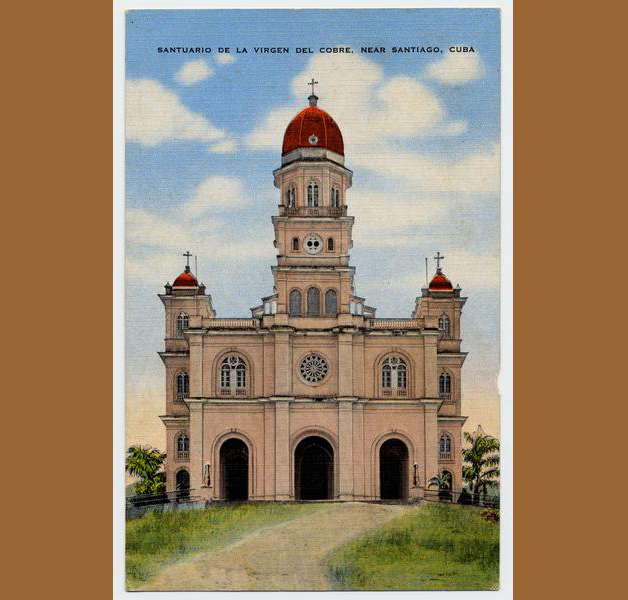 |
| |
| |
North American postcard of Sanctuary in El Cobre, c. 1930s-40s.
Postcard Collection. Cuban Heritage Collection, Richter Library, University of Miami.
 
Recent regional map with tourist landmarks (left); recent tourist postcard from El Cobre with postcards from elsewhere in the world (right). Click on images to view full size |
|
|
 |
< 2 >
This North American postcard speaks to the iconization of the Virgin's Sanctuary as a (wholesome) tourist landmark after the 1920s when modern tourism became an important industry in the Cuban Republic. With the strong US presence in the island after 1898 Cuba became a favorite destination for North American visitors and later for throngs of tourists. While religious pilgrims to the shrine took holy cards and rosaries back home, secular tourists, and later pilgrims influenced by the new tourism too, were fond of buying and mailing postcards like this.
Due to the near closedown of commercial tourism after the Revolutionof 1959 and the subsequent marginalization of the Church and other religious spaces, the Sanctuary lost its tourist landmark status and even its stature as a privileged national site. The week-long public celebratons around the Virgin's annual festivity in September 8th were suspended and reduced to more modest religious services inside the boundaries of the Sanctuary. Although individual pilgrims continued to pay their visits to the shrine, their numbers dramatically declined.
The revival of the tourist industry in the 1990s, particularly after the "Special Period," together with the new religious opening in society, has again turned the Sanctuary into a landmark site. It now appears in tourist maps and advertisements alongside other landmarks, including those related to the Socialist Revolution. The festivities of the Virgin have begun to draw large numbers of local and regional visitors too. With the recent closing down of the town's copper mining industry, cultural/religious tourism may be now a matter of economic survival. |
